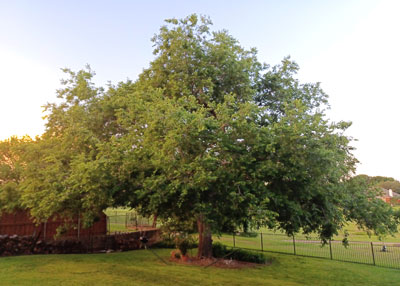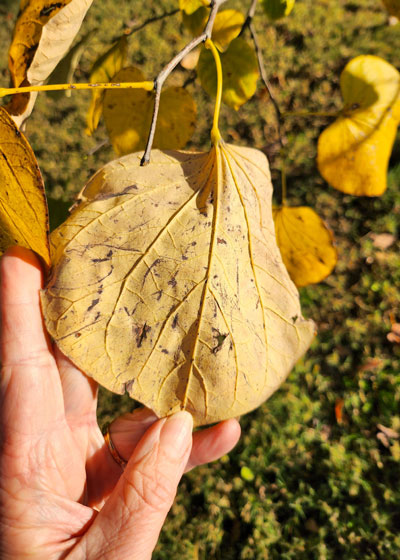Q&A – Ask Neil: December 12, 2024
(Please read these instructions carefully.)
Before you post your question, please look at recent issues to see if someone else has already asked it. You might find your answer there.
How to submit your question…
(Note: You may need to allow a pop-up window to come up in order to get the link for sending your photo(s). If you have already submitted your question and didn’t see the pop-up window, please click here.)
• Click the link provided below to post your question. After you submit your question, a new window will pop up giving you the address to which you can e-mail a SHARP, HIGH-RESOLUTION PHOTO to accompany your question. Please DO NOT SEND THUMBNAIL PHOTOS in case I need to zoom in to see things.
• Click here to post your question.
• Please ONLY POST YOUR QUESTION ONE TIME. We can only accept a set number of questions each week, and when we get duplicates it costs other people their chances.
• One question per reader, please.
• Please use this only for posting questions – not for standard emails.
• Watch for your answer in the following week’s e-gardens.
• I choose those of greatest general interest. For example, plant IDs seldom make the cut.
• I must have your first name or initials.
• I must have your city or county. (Texas is a very large state.)
QUESTION 1
WHY WOULD OUR ELMS HAVE TURNED RED THIS YEAR?
Question: Our elms normally turn golden yellow in the fall. This year they turned red similar to our Japanese maple. Why would that have happened? Kathleen P., Grapevine.
Answer: Fall color is an odd thing. It all has to do with temperature, minerals, and moisture. As cooler temperatures cause green chlorophyll to break down, pigments called anthocyanins come to the forefront resulting in reds to be prominently displayed. Usually there aren’t a lot of anthocyanins in elms, but under certain weather conditions there can be. Fall color is quite variable with some species. You may never see this again with your elms.
As a postscript after I had written what you just read, I looked at two large American elms across the creek from our sunroom. They have a decided tinge of red in their leaves, too. Much more so than their normal buttery yellow glow. So I’m in there with you.
QUESTION 2
HOW CAN I GET MY HOLLIES TO FILL BACK IN?
Question: How can I encourage my hollies to generate new growth in areas damaged by the cold of February 2021? Branches continue to die and leave gaps. Judith S., Waco.


I’m a bit perplexed. I have several hundred hollies in my home landscape. (Yeah, I’m a holly nerd.) However, I only lost a couple of Carissas to that cold spell. And McKinney was 6 or 8 degrees colder than Waco if I’m remembering correctly. More importantly, that was four years ago. That damage shouldn’t still be showing up.
This looks more like sporadic drought damage that many of us have suffered from hollies that got just a bit too dry one of the last couple of summers when we went many weeks without rain. Hollies don’t wilt. We get little warning that they’re in such dire straits. Unfortunately, the only way to get them to fill back in is to do a significant job of pruning them in late winter, before the new spring growth. You may remember apical dominance from your high school biology classes. Upper buds have hormones that “tell” the lower buds to remain dormant so that no new growth occurs down in those voids. Until you do the pruning, the voids will remain.
QUESTION 3
JUST WANTED TO SHARE A PHOTO OF MY ENCORE AZALEAS
Question: I wanted to share this current photo of my Encore azaleas – still blooming in December. They started this bloom in September. I couldn’t be happier. Thanks for suggesting them. Steve C., Bedford.

Answer: Well done! I saw another bed of perhaps the same variety in West McKinney last weekend as my wife and I were out looking at Christmas lights. (Leave it to me to be looking at landscapes instead.) The Encores have proven to be just as advertised in reblooming several times each year as long as gardeners meet their soil requirements (acidic) and keep them moist all the while. You’re obviously doing things right.
QUESTION 4
HOW CAN I CONTROL NUTSEDGE IN MY BUTTERFLY GARDEN?
Question: Nutsedge is taking over my butterfly garden. All the solutions seem to be products that keep seed from germinating. That would not be good for a butterfly garden. Do you have any suggestions? Nancy, College Station.
Answer: I spent half my childhood dealing with nutsedge in my own gardens in College Station, so I feel your pain.
It sounds like you’re describing pre-emergent weedkillers. That’s how they work against weeds like crabgrass, grassburs, dandelions, clover, and other annual weeds. Nutsedge, however, is a perennial weed and the pre-emergents would never be recommended for it.
There are two specific herbicides for control of nutsedge. The original Image product is what I have used for 25 or 30 years. It has done a very good job for me, although admittedly I have used it primarily in turf areas and not in butterfly gardens. I would encourage you to read its label online and perhaps even reach out to the manufacturer to determine if it would be cleared for such use. You could always try it in one small area and monitor the results before you used it over the entire garden. It is used two times 30 days apart, both of them between May 15 and September 15. It is applied to a specified area, then watered into the soil deeply. Nutsedge roots take up the herbicide and the plants die out gradually over a period of weeks.
Be careful to get the original Image that is intended for control of nutsedge. It was so successful that the manufacturer broadened the brand name by blending other ingredients for control of other weeds. Those blends would not be appropriate for use in your butterfly garden.
Commercial applicators often use another product called Sedgehammer (note the clever misspelling of the name). It is different chemistry, but it is used in much the same way.
QUESTION 5
MY DUTCH IRIS ARE ALREADY GROWING. WILL THEY BE OK?
Question: I planted my Dutch iris bulbs in November about 3 in. deep. They are already sprouting. Has the warmer weather this season caused them to grow early? I haven’t pre-chilled them in past years. Do we have a “new normal” for our weather? Lisa A., Dallas.
Answer: I can’t speak to the future of global warming. That’s above my intellect, but I can tell you that I have gotten a variation of this question every winter for the past 50 years. Usually it’s with daffodils and jonquils, but I’ll certainly accept your Dutch iris. They’ll be fine. If you have some shredded tree leaves you might spread them out around the sprouts as a winter mulch in case there is a severe winter cold spell. The mulch would moderate winter temperate changes, and in doing so it would protect the new growth.
QUESTION 6
SHOULD I FERTILIZE MY PECAN AND HACKBERRY TREES?
Question: I have a large pecan and large hackberry tree in my yard. Would you recommend fertilizing them now for the winter, or should I wait until spring? Tim W., Plano.


Answer: I fertilize in anticipation of growth. With that as my guideline, I recommend that you wait until March to fertilize your trees.
QUESTION 7
SHOULD I HAVE MY REDBUDS TREATED FOR FUNGUS?
Question: Two weeks ago a salesman from a yard treatment company stopped by. He said our redbuds have a fungus. He tried to sell us a big treatment plan. Are they in need of being sprayed? These are leaves from either Oklahoma or eastern redbud and a Forest Pansy redbud. The photos were taken one month ago. I couldn’t get them to post until now. The trees have been in our landscape for 2-4 years. Rhonda S., Denton.





Answer: These trees did not need to be sprayed then, and they do not need to be sprayed now. There might have been a minor leaf spot on the foliage back in late spring or summer that was still showing up when the guy knocked on your door. That’s common with redbuds. But spraying after mid-summer offers very little benefit because the leaves are still going to show the effects of the disease and little new growth will be produced after that anyway. These leaves look absolutely normal for redbuds in the fall. No cause for concern. I would suggest you work with a certified arborist (such as the company who advertises in e-gardens) and put your faith in their experience.
I’m sorry you had trouble getting the photos to post. It may be because you were attaching so many. All I really need is a good close-up and a sharp overall photo. That might go more quickly for you. Thanks for being persistent.
